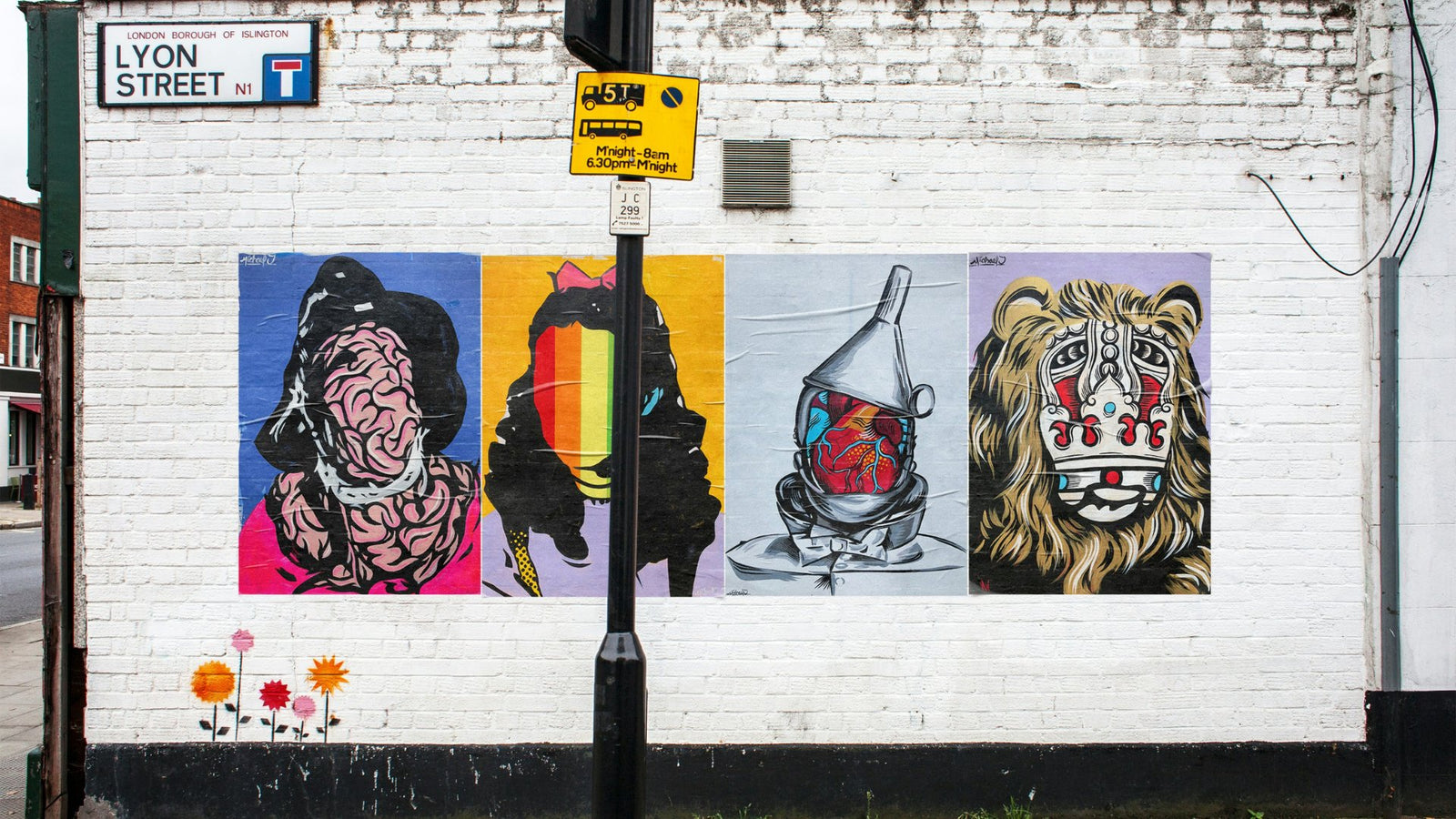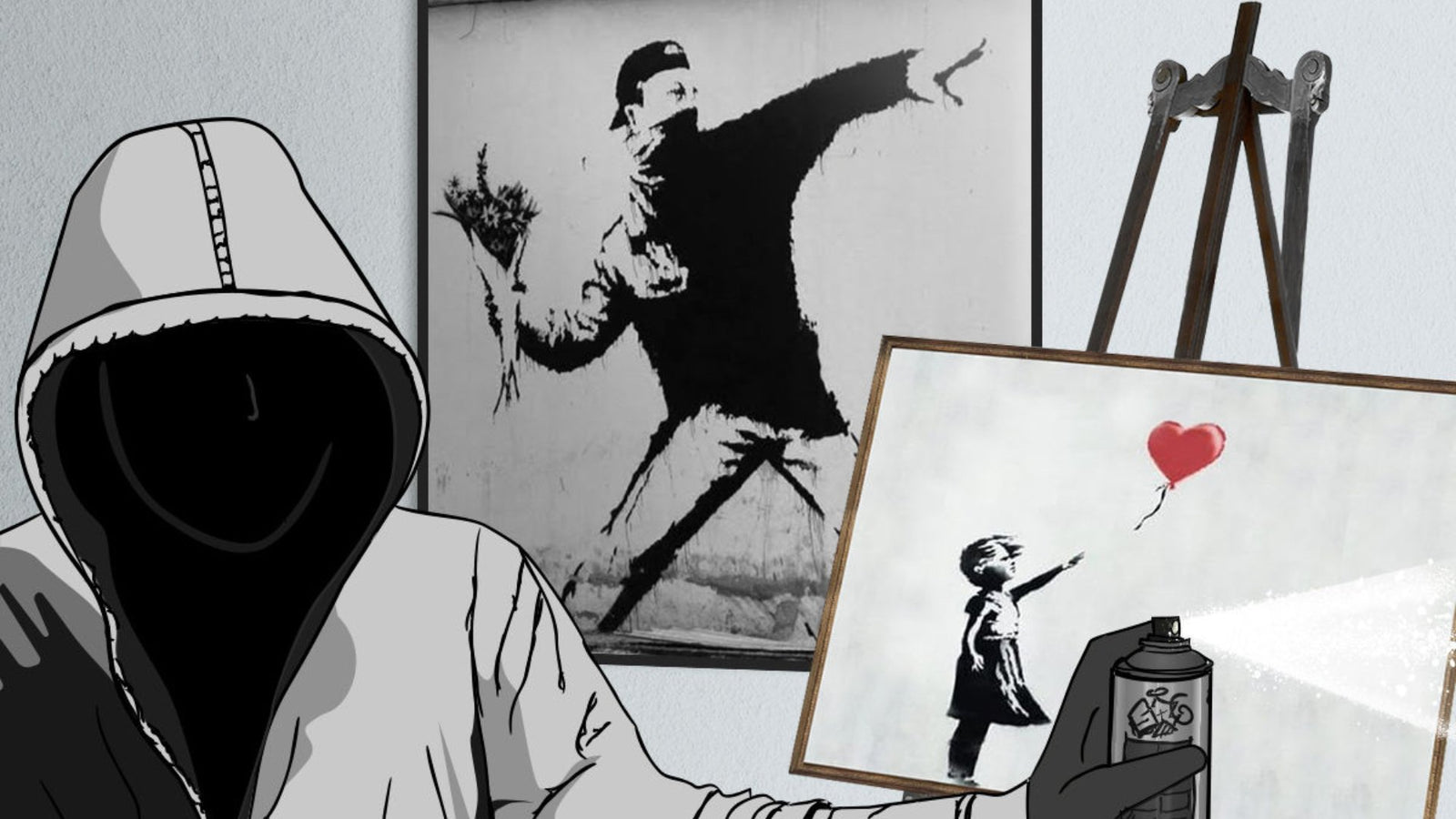Your Cart is Empty
🎁BUY 2, GET 1 FREE + FREE WORLDWIDE SHIPPING 🚚
🎁BUY 2, GET 1 FREE + FREE WORLDWIDE SHIPPING 🚚
Why Pop Art is the Ultimate Form of Creative Expression
11 min read

Pop Art emerges as a vibrant celebration of creativity, effectively merging commercial culture with fine art to challenge perceptions and stimulate intellectual discourse.
This movement distinctly expresses individuality and identity, employing humor and satire while actively pushing against social norms, all while reflecting the zeitgeist of its era.
This exploration will delve into the techniques that characterize this movement, highlight influential artists, and provide insights on how to incorporate the exhilarating energy of Pop Art into everyday life.
Whether one is an art enthusiast or merely curious about this dynamic genre, there is valuable information available for all.
Why Pop Art is the Ultimate Form of Creative Expression
.jpg_00.jpeg)
Pop Art emerged as a significant art movement in the mid-20th century, representing a transformative form of creative expression that challenged conventional boundaries and redefined the relationship between art and popular culture.
Renowned artists such as Andy Warhol and Roy Lichtenstein effectively harnessed the elements of mass media, consumerism, and visual storytelling. They employed vibrant colors and bold imagery to produce works that resonate with the observer.
This movement not only celebrates artistic freedom but also critiques societal norms, establishing a distinctive amalgamation of artistic innovation and cultural commentary.
1. Expressing Individuality and Identity
Pop Art provides artists with a platform to articulate their individuality and identity through innovative techniques and vibrant visuals, resonating deeply with contemporary audiences who seek authentic self-expression. By embracing the aesthetics of popular culture, artists establish a visual language that reflects their personal narratives and experiences.
This artistic movement, distinguished by bold colors and familiar imagery, invites viewers to engage emotionally with the artwork. Prominent figures such as Andy Warhol and Roy Lichtenstein utilized techniques like repetition and comic-strip styling to challenge traditional concepts of art. Warhol's soup can series transcends mere consumerism, offering insightful commentary on identity and commercial culture, while Lichtenstein’s application of Ben-Day dots presents a whimsical yet profound perspective on emotional resonance.
Such artistic expressions not only celebrate self-identity but also stimulate a dialogue regarding the intersection of personal and collective experiences, rendering the art form profoundly relatable.
2. Using Humor and Satire
Humor and satire serve as fundamental elements of Pop Art, frequently employed to subvert traditional artistic norms and offer social critique through ironic humor and playful artistic components. This distinctive approach engages viewers in a reflective dialogue concerning consumer culture and societal values.
By utilizing techniques such as repetition and bold color palettes, artists like Warhol and Lichtenstein draw attention to the absurdity inherent in mass production and popular media. Warhol’s iconic Campbell's Soup Cans not only reflect the commercialization of everyday items but also challenge the conventional understanding of fine art, proposing the notion that any product may be considered art. Similarly, Lichtenstein’s works, inspired by comic strips, employ exaggerated facial expressions and speech bubbles to infuse humor into the ordinary, satirizing both commercial art and the cultural preoccupations of the 1960s.
Collectively, these artists critique societal norms and invite the audience to reevaluate the significance of art in a consumer-driven world, all while crafting a visually captivating experience.
3. Challenging Social Norms
Pop Art is distinguished by its capacity to challenge social norms, employing vibrant colors and bold imagery to interrogate conventional notions of art and consumerism. This art movement serves as a platform for cultural commentary, pushing boundaries and inviting viewers to engage in critical reflection on social movements.
Through its playful yet provocative nature, Pop Art prompts discussions about identity, mass culture, and the commodification of art. Artists within this genre, such as Andy Warhol and Roy Lichtenstein, intentionally appropriated commercial techniques and imagery, transforming everyday objects into powerful statements that contest prevailing artistic traditions.
Warhol's iconic Cambell's Soup Cans, for example, underscores the tension between high art and consumer culture, illustrating how art can function both as an object of desire and a critique of mass consumption. This subversive approach not only redefines the parameters of art but also fosters a new understanding of cultural value, challenging audiences to reevaluate their perspectives on artistry and society.
4. Reflecting the Times
The essence of Pop Art resides in its capacity to reflect societal conditions, effectively capturing the cultural shifts and contemporary issues of its time through innovative artistic techniques. By merging elements of nostalgia with modern aesthetics, artists create works that promote viewer interaction and resonate with shared human experiences.
This movement, which emerged in the mid-20th century, adeptly appropriated imagery from popular culture, thereby challenging traditional notions of fine art and democratizing artistic expression. Renowned figures such as Andy Warhol and Roy Lichtenstein employed bold colors and commercial techniques to critique consumerism, transforming everyday objects into significant statements.
For instance, Warhol's depiction of soup cans not only celebrated consumer culture but also prompted audiences to reconsider their relationship with mass production.
In contemporary times, Pop Art continues to maintain its relevance, as modern artists draw upon its legacy to explore themes of identity, technology, and social commentary, ensuring that viewer engagement remains central to the ongoing artistic dialogue.
The Techniques and Styles of Pop Art
.jpg_01.jpeg)
The techniques and styles of Pop Art are notably diverse, characterized by distinct methods such as appropriation, collage, and the application of vibrant colors and bold lines, which together create visually striking compositions that capture attention.
These artistic techniques reflect the ethos of the movement, celebrating innovation alongside playful experimentation.
1. Appropriation
Appropriation is a fundamental technique in Pop Art, enabling artists to reinterpret and transform existing cultural icons into new artistic expressions, thereby generating fresh cultural commentary. This method of artistic innovation challenges traditional notions of originality and authorship in contemporary art.
By utilizing recognizable imagery from advertising, comic strips, and everyday consumer goods, Pop Artists such as Andy Warhol and Roy Lichtenstein have effectively blurred the boundaries between high art and mass culture, while also provoking critical reflection on societal values.
Warhol's iconic soup cans, for example, elevate everyday consumer products to objects of desire, encouraging viewers to examine the nature of consumerism. In a similar vein, Lichtenstein's comic-style paintings parody romantic clichés, simultaneously celebrating and critiquing the emotional narratives embedded in popular culture.
Through these reinterpretations, appropriation functions not only as a lens for critique but also as a means of rediscovering the beauty and complexity inherent in the mundane, rendering cultural commentary both accessible and thought-provoking.
2. Collage
Collage serves as a prominent technique within the realm of Pop Art, wherein artists integrate various materials and images to produce mixed media works that convey compelling visual narratives. This methodology underscores the dynamic nature of visual culture and its capacity to engage viewers on multiple levels.
Artists such as Romare Bearden and Richard Hamilton have adeptly utilized collage to construct narratives that reflect contemporary society and consumerism. By layering photographs, advertisements, and everyday objects, they encourage audiences to reevaluate their relationship with popular culture.
Through techniques such as juxtaposition and fragmentation, these artists not only encapsulate the essence of their subjects but also challenge viewers to delve into the deeper meanings behind the visual elements. This distinctive form of storytelling in Pop Art accentuates the transformative power of merging disparate media, prompting audiences to contemplate the world surrounding them.
3. Bright Colors and Bold Lines
The use of bright colors and bold lines in Pop Art generates an immediate visual impact that engages viewers and enhances the overall aesthetics of the artwork. This striking technique is not merely decorative; it conveys profound meanings regarding consumerism and popular culture.
The interplay of vivid hues, such as electric blues and vibrant reds, can evoke significant emotional responses, effectively immersing the observer in the piece. For example, works by Andy Warhol, particularly his renowned Campbell's Soup Cans, illustrate how repetitive bold outlines, paired with striking colors, can elevate everyday objects to icons of commercial culture.
The relationship between graphic design elements and artistic techniques in Pop Art demonstrates a distinctive fusion, wherein the lines serve not only as outlines but as integral components that frame the narrative. By employing these visual elements, artists articulate critical commentary on the superficial aspects of modern life, all while celebrating its inherent vibrancy.
4. Repetition
Repetition is a fundamental technique in Pop Art, frequently utilized to establish a visual language that reinforces themes and messages within the artwork. By incorporating repeated elements, artists engage viewers and encourage a deeper contemplation of the cultural commentary inherent in their work.
This approach not only serves to capture attention but also stimulates reflection by emphasizing the commonplace aspects of contemporary life, such as consumerism and celebrity culture. For example, in Andy Warhol’s iconic soup can series, the repetitive imagery underscores the commercialization of everyday products while challenging the viewer to reconsider the nature of art itself.
Similarly, Roy Lichtenstein’s comic-style visuals employ repetition to create a rhythm that mirrors both the comic book format and the recurring motifs found in modern advertising. Such artistic techniques enhance emotional resonance, enabling viewers to analyze the underlying societal critiques while fully immersing themselves in the vibrant visual experience.
Famous Pop Art Artists and Their Works
.jpg_10.jpeg)
Renowned Pop Art artists such as Andy Warhol, Roy Lichtenstein, Keith Haring, and Claes Oldenburg have made a significant impact on the art movement, producing iconic imagery that continues to shape contemporary culture.
Their works exemplify the diverse ways in which Pop Art engages with themes of consumerism, celebrity culture, and social critique.
1. Andy Warhol
Andy Warhol, a seminal figure in the Pop Art movement, is widely recognized for his examination of celebrity culture and mass media, exemplified by iconic works such as the Campbell's Soup Cans and the Marilyn Diptych. His artistic legacy endures, representing the intersection of art and commercialism.
Through his innovative techniques, particularly silkscreen printing, he not only democratized the process of art creation but also challenged the notion of originality within a consumer-driven society. Warhol’s limited edition prints function as both a celebration and a critique of societal preoccupations with fame and materialism. Prominent themes of repetition and commodification are evident in his work, mirroring the rapidly evolving media landscape of his time.
By blurring the boundaries between high art and commercial products, Warhol's influence extends beyond the art world, sparking discussions that resonate within contemporary culture and affecting numerous artists who engage with similar themes.
2. Roy Lichtenstein
Roy Lichtenstein is renowned for his distinctive incorporation of comic strips and visual metaphors, transforming commonplace imagery into profound artistic expressions that resonate emotionally with audiences. His innovative techniques have established him as a pivotal figure in the Pop Art movement.
By utilizing bold colors, thick black outlines, and Ben-Day dots, he effectively blurs the lines between commercial art and fine art, encouraging audiences to reconsider the intrinsic value of both. Themes of romance, war, and consumer culture frequently surface in his works, reflecting the societal norms and challenges of his era.
Through this approach, the artist conveys complex emotions, often employing irony and parody to underscore the absurdities of contemporary life. As he captures ephemeral moments with remarkable precision, viewers are drawn into a realm where simplicity conceals deeper emotional narratives, fostering a powerful connection between the artwork and the observer.
3. Keith Haring
Keith Haring's work is distinguished by its vibrant, playful art style and a strong emphasis on public engagement, frequently addressing themes related to social movements and activism. His commitment to artistic freedom and community-centered practices has had a profound and lasting impact on contemporary art.
Through his iconic figures and symbols, Haring effectively communicated messages that resonated with urgent societal issues, including the AIDS crisis and LGBTQ+ rights. Public spaces served as his canvas, facilitating meaningful interactions between communities and art. For example, his renowned mural "Crack is Wack" not only exemplified his unique aesthetic but also functioned as a poignant critique of drug addiction and its societal consequences.
Haring's capacity to integrate social commentary into accessible and visually striking works exemplifies the intersection of art and activism. This approach continues to inspire new generations of artists to leverage their platforms for social change while encouraging audiences to reflect on pressing societal issues.
4. Claes Oldenburg
Claes Oldenburg is recognized for his innovative sculptures that reimagine everyday objects as large-scale installations, effectively merging kitsch with artistic ingenuity to critique consumerism. His playful methodology challenges conventional notions of art and engages audiences in a discourse regarding daily life.
Through his creations, the artist encourages a reevaluation of the ordinary, providing a novel perspective on the objects that constitute our daily existence. Iconic works such as the monumental 'Soft Toilet' and 'Giant BLT' illustrate how commonplace items can provoke deep reflections on desire and excess, resonating with themes of material culture.
By amplifying these familiar forms, Oldenburg not only critiques consumerism but also instigates a humorous yet incisive examination of societal values. Each installation acts as a reminder of the intersection between the mundane and the extraordinary, emphasizing the transformative role of art in reshaping perceptions.
How to Incorporate Pop Art into Your Life
.jpg_11.jpeg)
Incorporating Pop Art into one’s life can be a stimulating and enriching endeavor, whether through the decoration of one’s home or office, the adoption of Pop Art-inspired fashion, or attendance at exhibitions that honor this dynamically art movement.
Each of these methods provides an opportunity to engage with the aesthetics and cultural commentary that are fundamental to Pop Art.
1. Decorate Your Home or Office
Decorating a home or office with Pop Art can significantly enhance the environment by introducing bold imagery and vibrant colors, thereby creating a lively atmosphere that reflects an individual’s artistic sensibility. Incorporating iconic pieces may also facilitate engaging conversations and elevate the overall aesthetic.
To effectively convey the dynamic spirit of visual culture, it is advisable to utilize color schemes that emphasize contrast, such as pairing highly saturated hues with neutral backgrounds. Furthermore, the placement of artwork is crucial; hanging large canvases at eye level or creating a gallery wall can effectively draw attention and generate interest.
Selecting modern furniture with sleek finishes or geometric shapes will complement the Pop Art aesthetic, while vibrant accent pieces, such as cushions or rugs, can cohesively unify the overall design. This deliberate approach not only celebrates the essence of Pop Art but also transforms any space into an engaging visual experience.
2. Wear Pop Art-inspired Fashion
Wearing Pop Art-inspired fashion provides an opportunity to express appreciation for the movement while embracing its playful art style, resulting in a bold statement within one’s wardrobe. From graphic t-shirts to various accessories, these items effectively showcase artistic techniques in everyday fashion.
By incorporating striking colors and iconic motifs, such as comic strips and bold typography, these designs transform ordinary outfits into wearable masterpieces. Fashion designers frequently draw inspiration from renowned Pop Artists, creating garments embellished with vibrant prints that evoke Roy Lichtenstein’s comic-style graphics or accessories that reflect Andy Warhol’s famous Campbell's Soup cans.
Such pieces not only preserve the essence of the art movement but also encourage individuals to explore their creativity, making high fashion both accessible and enjoyable. Whether featuring oversized prints or whimsical shapes, this fusion elevates personal style, seamlessly blurring the lines between art and fashion.
3. Attend Pop Art Exhibitions and Events
Attending Pop Art exhibitions and events presents a valuable opportunity to engage deeply with this vibrant art movement, thereby fostering a greater appreciation for its themes and techniques. Direct interaction with the artwork enhances one's understanding and connection to the cultural commentary it conveys.
Viewing works by renowned artists such as Andy Warhol and Roy Lichtenstein facilitates an exploration of the complex interplay between consumerism and individuality, thereby encouraging meaningful dialogue among attendees. Notable exhibitions, including those showcasing Warhol's iconic Campbell's Soup Cans and Lichtenstein's comic-inspired creations, not only highlight their historical significance but also invite viewer interaction and personal reflection.
These experiences stimulate discussions regarding artistic methodologies and societal influences, often unveiling layers of meaning that become apparent only in an interactive setting. Such events serve as essential platforms for community engagement, enabling art enthusiasts to connect through shared insights and diverse interpretations.
4. Create Your Own Pop Art
Creating your own Pop Art can be an enjoyable and fulfilling endeavor that facilitates self-expression through the use of vibrant colors and playful imagery characteristic of the movement. By experimenting with various artistic techniques, individuals can cultivate a unique style that embodies their personal vision.
To embark on this artistic journey, one may consider incorporating iconic themes and styles, such as commercial imagery and popular culture references, thereby establishing a dialogue between high art and everyday life. It is beneficial to explore different mediums, including collage or silkscreen printing, to determine how these techniques can enhance one's work. Embracing bold contrasts and repetition is advisable, as these elements can evoke the dynamic energy typical of Pop Art.
Moreover, studying the works of esteemed artists such as Andy Warhol or Roy Lichtenstein may serve as a source of inspiration and stimulate creativity. Ultimately, the objective is to engage in the process and allow one's imagination to flourish.



